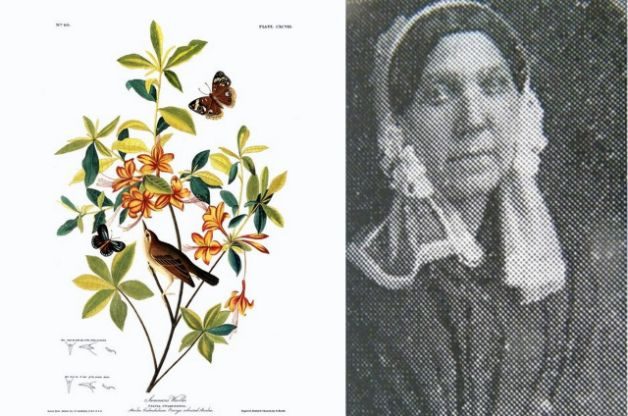Celebrating Women Naturalists Through History
Updated: Apr. 24, 2020
In honor of International Women’s Day, learn more about four women naturalists and their contributions to our knowledge of birds, butterflies, and botany.
March 8 is International Women’s Day, a time to celebrate the accomplishments of women through history and in today’s world. International Women’s Day has been observed since the early 1900s, a time when women’s accepted roles in society were dramatically different than they are today. But there have always been women who broke the mold, pursuing their passions and making important contributions along the way. Here are four women naturalists whose achievements weren’t limited by the time in which they lived.

Eleanor Glanville (c. 1654 – 1709) Centuries ago, women naturalists were natural curiosities in and of themselves. Born in 17th century England to a well-to-do family, Eleanor Glanville was expected to live quietly and marry well, but not much more. Instead, Eleanor created an enormous collection of British butterflies, better than any known at the time. Her collection was instrumental in creating the first illustrated catalog of these insects. Eleanor also studied the entire lifecycle of butterflies, drafting local girls to help her collect specimens and teaching them natural history along the way. Despite her important contributions to butterfly knowledge, Eleanor’s “unnatural” interest in nature eventually worked against her. After her death, her interest in caterpillars and butterflies would be used to set aside her will on the grounds that she suffered from madness when she wrote it. Learn more about Eleanor Glanville here.
Maria Sibylla Merian (1647 – 1717) Though she lived around the same time as Glanville and shared her interest in butterflies, Maria Sibylla Merian went even further in her explorations – all the way to South America. Maria was born to a family of artists and began painting at a young age. She loved and collected butterflies too, eventually combining these passions to great effect. At the age of 52, Maria and her daughter sailed from Amsterdam to Surinam, where they spent several years studying and painting the butterflies there. Maria specialized in painting the entire lifecycle of a species, greatly adding to our understanding to the various life stages. In her lifetime, she illustrated more than 180 species of butterflies, beautiful paintings still treasured today. Learn more about Maria Sibylla Merian here.
Maria Martin Bachman (1796 – 1863) John James Audubon’s bird paintings are famous worldwide, as beloved by birders now as they were when first published. Many people don’t realize, though, that while Audubon painted the birds shown in his work, he often hired others to illustrate the flowers, trees, and landscapes around the birds. One of these artists was Charleston native Maria Martin Bachman, who created the scenery for 18 of his paintings. Audubon thought highly of her work, encouraging her to study and paint birds, insects, and more. Many of her paintings were lost in the aftermath of the Civil War, but those that survive showcase her incredible talent. Learn more about Maria Martin Bachman here.
Elizabeth Gertrude Britton (1858 – 1934) Gardening has long been thought of as a “genteel” activity suited to women. But Elizabeth Britton took gardening a little more seriously than most, becoming an expert in bryology (the study of mosses) and North American wildflowers. She helped found the Wild Flower Preservation Society of America, which worked to preserve endangered wildflowers and educate the public. She was instrumental in raising the funds for and creating the New York Botanical Garden, and oversaw the collection of mosses there. By the late 1800s, there were more women naturalists than in the past, but they were still working in a man’s world. In 1893, Elizabeth was the only woman among the 25 charter members of the Botanical Society of America. Learn more about Elizabeth Britton here.